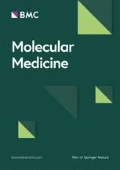Abstract
Background
Embryonic stem (ES) cells are lines of cells that are isolated from blastocysts. The murine ES cells were demonstrated to be true pluripotent cells as they differentiate into all embryonic lineages. Yet, in vitro differentiation of rhesus ES cells was somewhat inconsistent and disorganized. The recent isolation of human ES cells calls for exploring their pluripotential nature.
Materials and Methods
Human ES cells were grown in suspension to induce their differentiation into embryoid bodies (EBs). The differentiation status of the human ES cells and EBs was analyzed by following the expression pattern of several lineage-specific molecular markers using reverse transcription polymerase chain reaction (RT-PCR) and in situ hybridization.
Results
Here we report the induction in vitro of cystic embryoid bodies from human ES cells. Our findings demonstrate induction of expression of cell-specific genes during differentiation of the human ES cells into EBs. In the human EBs, we could show a characteristic regional expression of embryonic markers specific to different cellular lineages, namely, ζ-globin (mesoderm), neurofilament 68Kd (ectoderm), and α-fetoprotein (endoderm). Moreover, we present a synchronously pulsing embryoid body that expresses the myocardium marker α-cardiac actin. In addition, dissociating the embryoid bodies and plating the cells as monolayers results in multiple morphologies, among them cells with neuronal appearance that express neurofilament 68Kd chain.
Conclusion
Human ES cells can reproducibly differentiate in vitro into EBs comprising the three embryonic germ layers. The ability to induce formation of human embryoid bodies that contain cells of neuronal, hematopoietic and cardiac origins will be useful in studying early human embryonic development as well as in transplantation medicine.





Similar content being viewed by others
References
Robertson EJ. (1987) Embryo-derived stem cell lines. In: Robertson EJ (ed). Teratocarcinomas and Embryonic Stem Cells, a Practical Approach. IRL Press, Oxford, pp. 71–112.
Dushnik-Levinson M, Benvenisty N. (1995) Embryogenesis in vitro: study of differentiation of embryonic stem cells. Biol. Neonate 67: 77–83.
Capecchi MR. (1989) Altering the genome by homologous recombination. Science 244: 1288–1292.
Rossant J, Joyner AL. (1989) Towards a molecular-genetic analysis of mammalian development. Trends Genet. 5: 277–283.
Wobus AM, Holzhausen H, Jakel P, Schoneich J. (1984) Characterization of a pluripotent stem cell line derived from a mouse embryo. Exp. Cell. Res. 152: 212–219.
Wiles MV, Keller G. (1991) Multiple hematopoietic lineages develop from embryonic stem (ES) cells in culture. Development 111: 259–267.
Lindenbaum MH, Grosveld F. (1990) An in vitro globin gene switching model based on differentiated embryonic stem cells. Genes Dev. 4: 2075–2085.
Bain G, Kitchens D, Yao M, Huettner JE, Gottlieb DI. (1995) Embryonic stem cells express neuronal properties in vitro. Dev. Biol. 168: 342–357.
Levinson-Dushnik M, Benvenisty N. (1997) Involvement of hepatocyte nuclear factor 3 in endoderm differentiation of embryonic stem cells. Mol. Cell. Biol. 17: 3817–3822.
Thomson JA, Itskovitz-Eldor J, Shapiro SS, et al. (1998) Embryonic stem cell lines derived from human blastocysts. Science 282: 1145–1147.
Thomson JA, Kalishman J, Golos TG, Durning M, Harris CP, Hearn JP. (1996) Pluripotent cell lines derived from common marmoset (Callithrix jacchus) blastocysts. Biol. Reprod. 55: 254–259.
Thomson JA, Kalishman J, Golos TG, et al. (1995) Isolation of a primate embryonic stem cell line. Proc. Natl. Acad. Sci. U.S.A. 92: 7844–7848.
Thomson JA, Marshall VS. (1998) Primate embryonic stem cells. Curr. Top. Dev. Biol. 38: 133–165.
Chirgwin JM, Przybyla AE, MacDonald RJ, Rutter WJ. (1979) Isolation of biologically active ribonucleic acid from sources enriched in ribonuclease. Biochemistry 18: 5294–5299.
Southern EM. (1975) Detection of specific sequences among DNA fragments separated by gel electrophoresis. J. Mol. Biol. 98: 503–517.
Grifman M, Galyam N, Seidman S, Soreq H. (1998) Functional redundancy of acetylcholinesterase and neuroligin in mammalian neuritogenesis. Proc. Natl. Acad. Sci. U.S.A. 95: 13935–13940.
Krumlauf R, Hammer RE, Tilghman SM, Brinster RL. (1985) Developmental regulation of α-fetoprotein genes in transgenic mice. Mol. Cell. Biol. 5: 1639–1648.
Leder A, Weir L, Leder P. (1985) Characterization, expression, and evolution of the mouse embryonic ζ-globin gene. Mol. Cell. Biol. 5: 1025–1033.
Sassoon DA, Garner I, Buckingham M. (1988) Transcripts of alpha-cardiac and α-skeletal actins are early markers for myogenesis in the mouse embryo. Development 104: 155–164.
Julien JP, Meyer D, Flavell D, Hurst J, Grosveld F. (1986) Cloning and developmental expression of the murine neurofilament gene family. Br. Res. 387: 243–250.
Shamblott MJ, Axelman J, Wang S, et al. (1998) Derivation of pluripotent stem cells from cultured human primordial germ cells. Proc. Natl. Acad. Sci. USA 95: 13726–13731.
Sanchez A, Jones WK, Gulick J, Doetschman T, Robbins J. (1991) Myosin heavy chain gene expression in mouse embryoid bodies. An in vitro developmental study. J. Biol. Chem. 266: 22419–22426.
Acknowledgments
We are grateful to Oren Schuldiner for assistance and many helpful suggestions. The study was partially supported by the Alon Foundation (to N.B.).
Author information
Authors and Affiliations
Corresponding author
Rights and permissions
About this article
Cite this article
Itskovitz-Eldor, J., Schuldiner, M., Karsenti, D. et al. Differentiation of Human Embryonic Stem Cells into Embryoid Bodies Comprising the Three Embryonic Germ Layers. Mol Med 6, 88–95 (2000). https://doi.org/10.1007/BF03401776
Accepted:
Published:
Issue Date:
DOI: https://doi.org/10.1007/BF03401776




